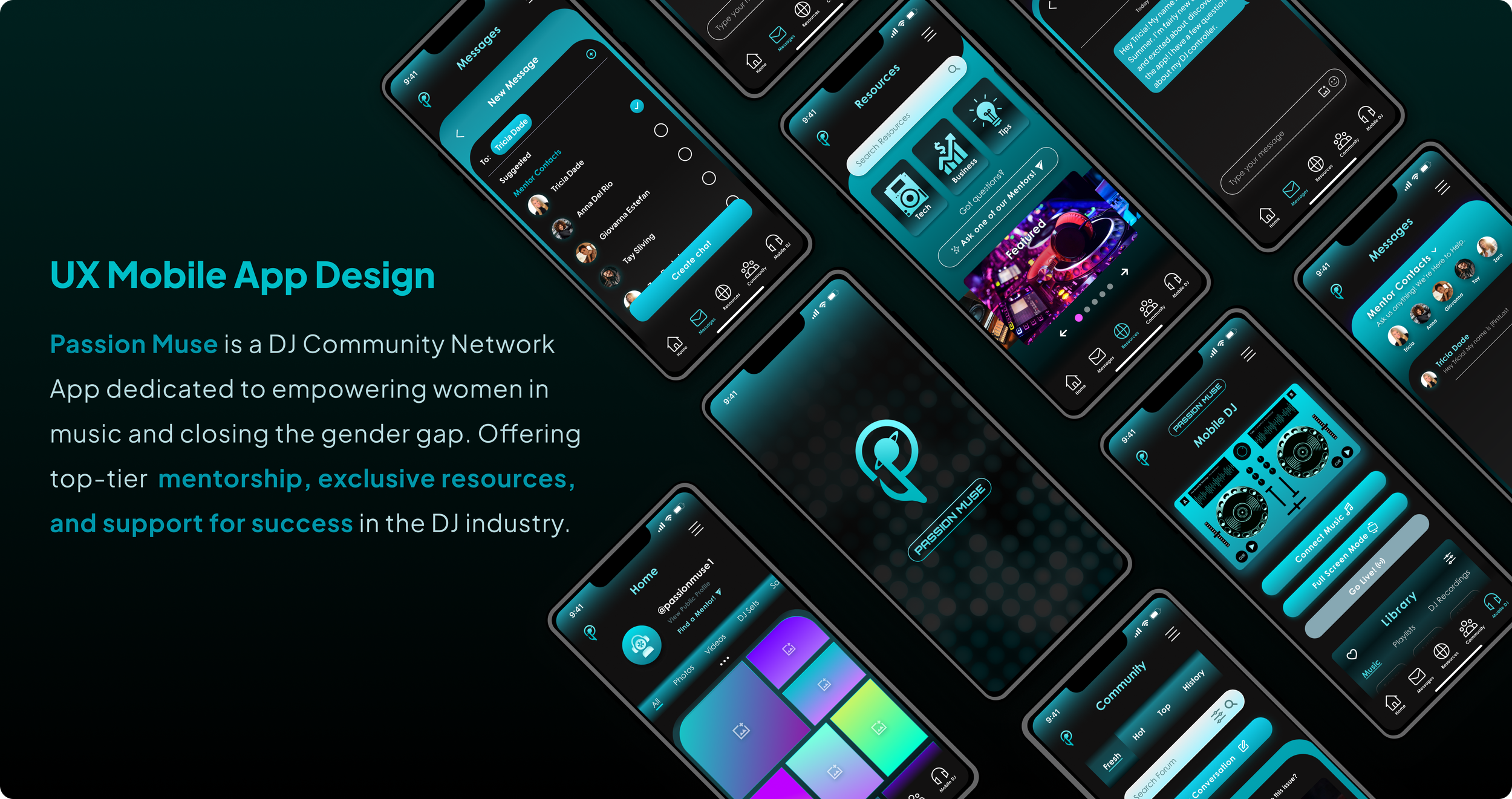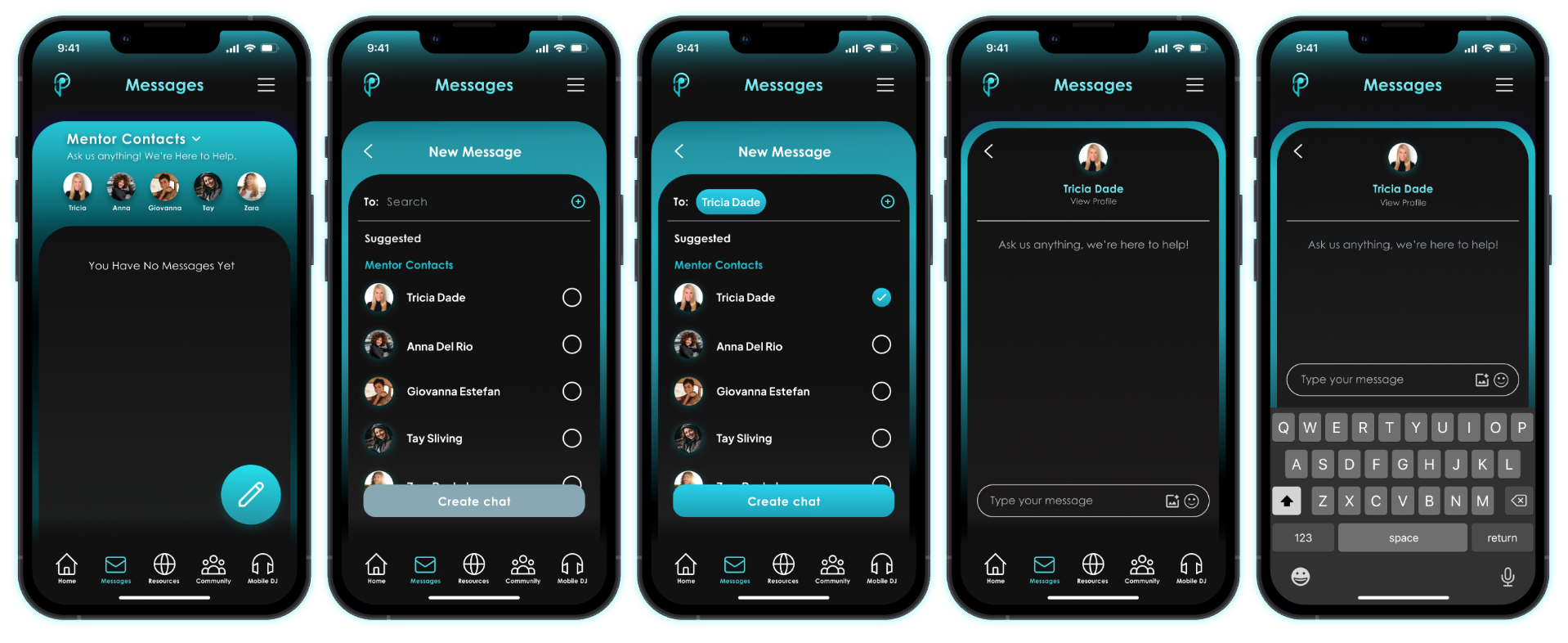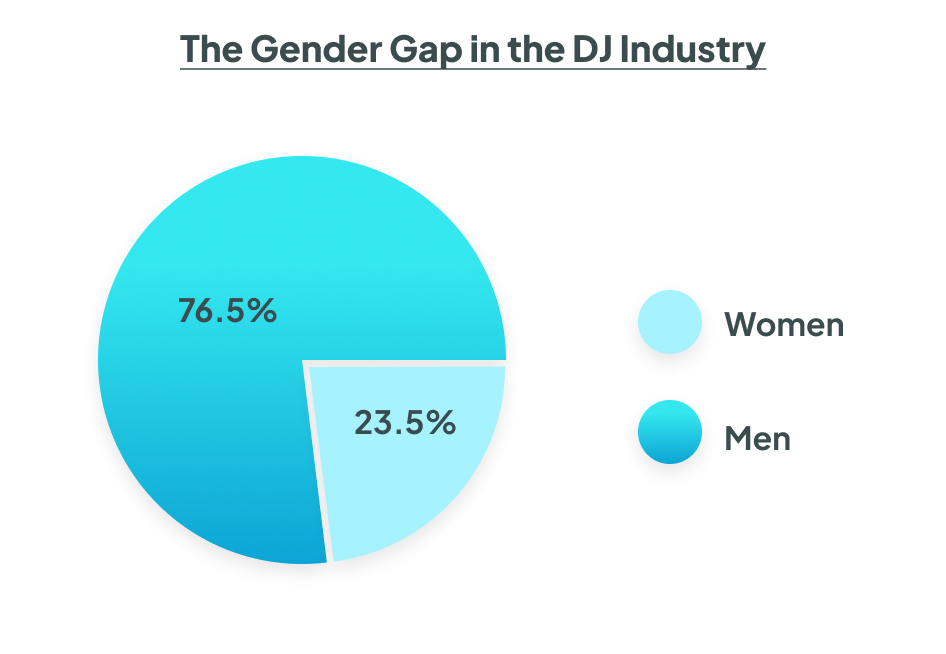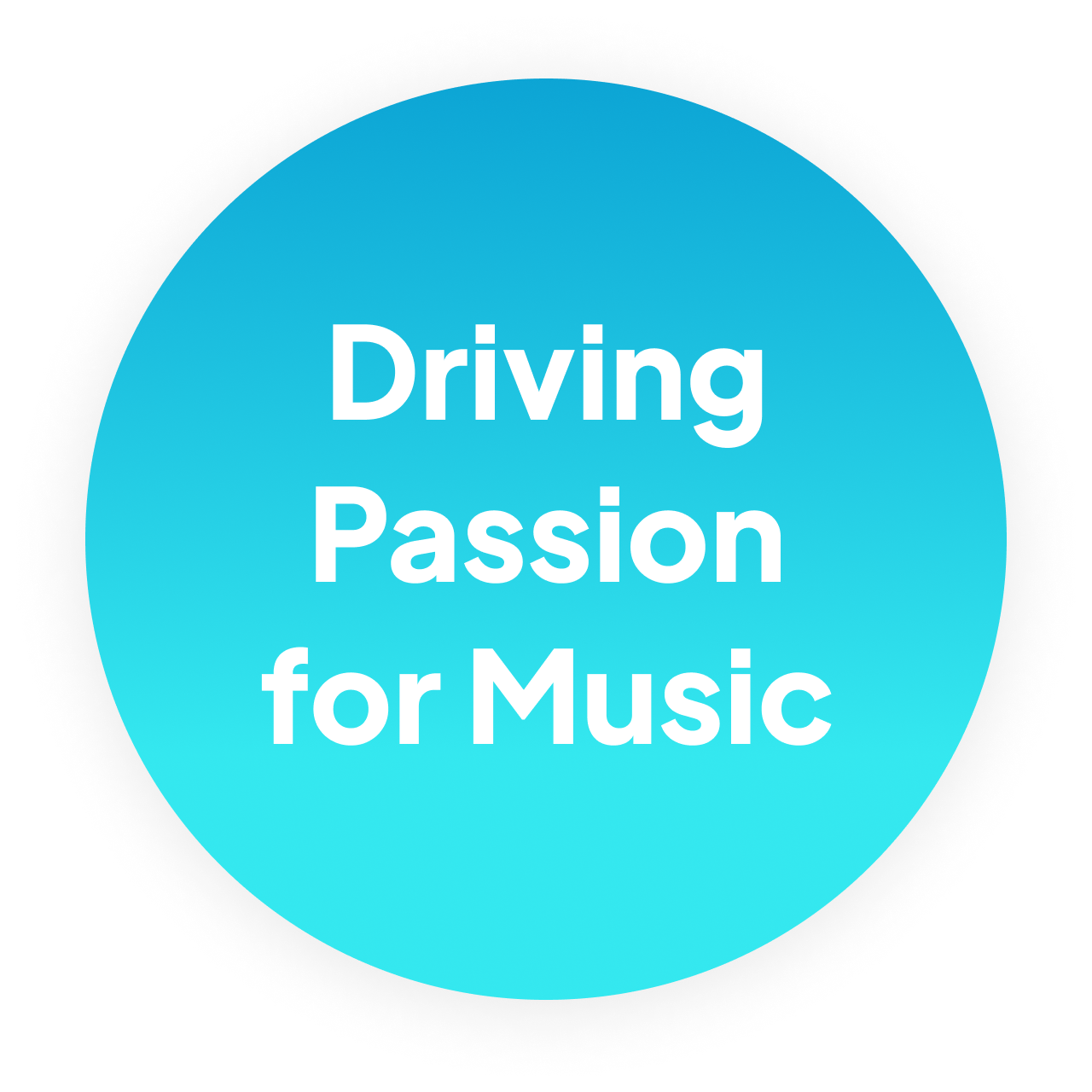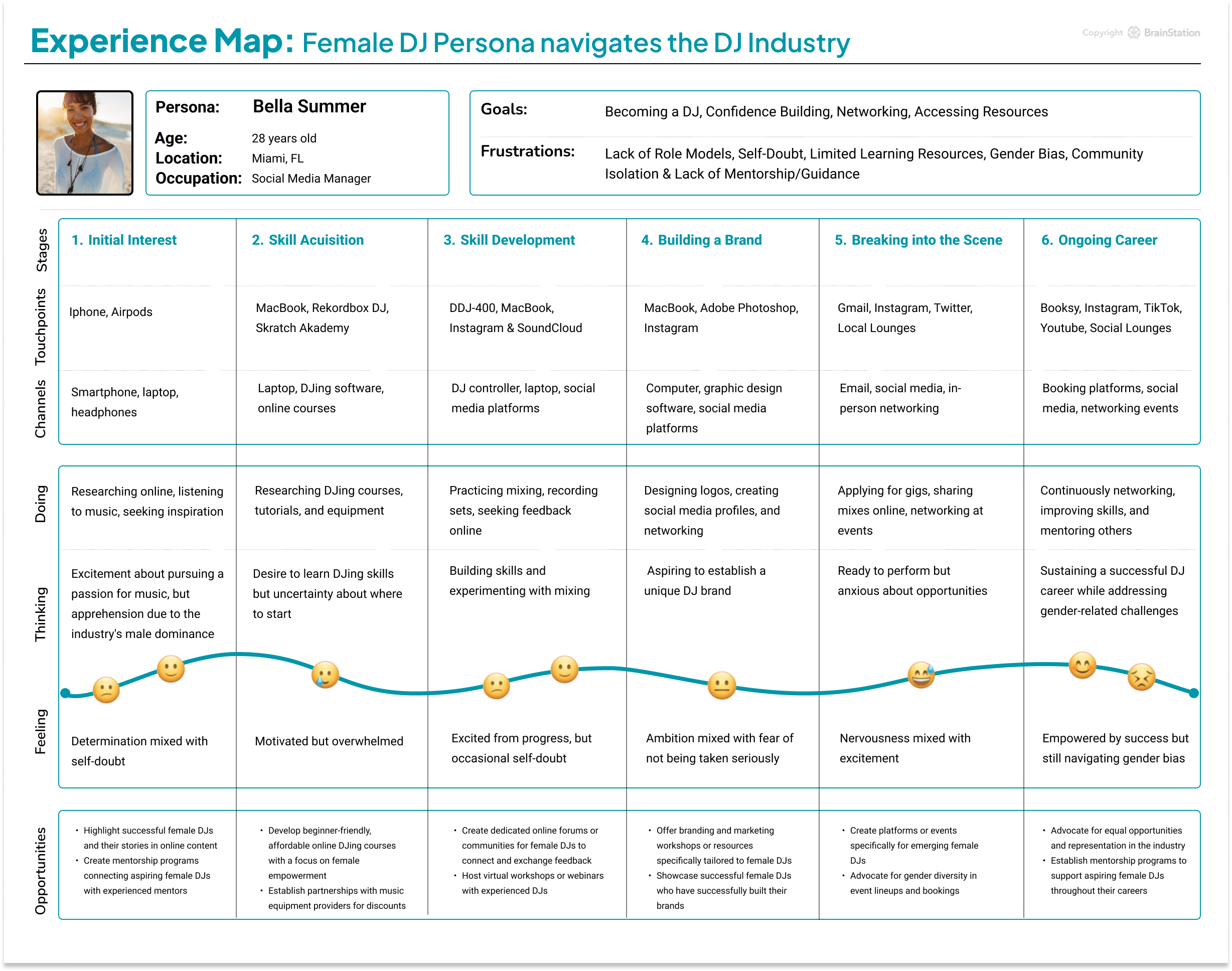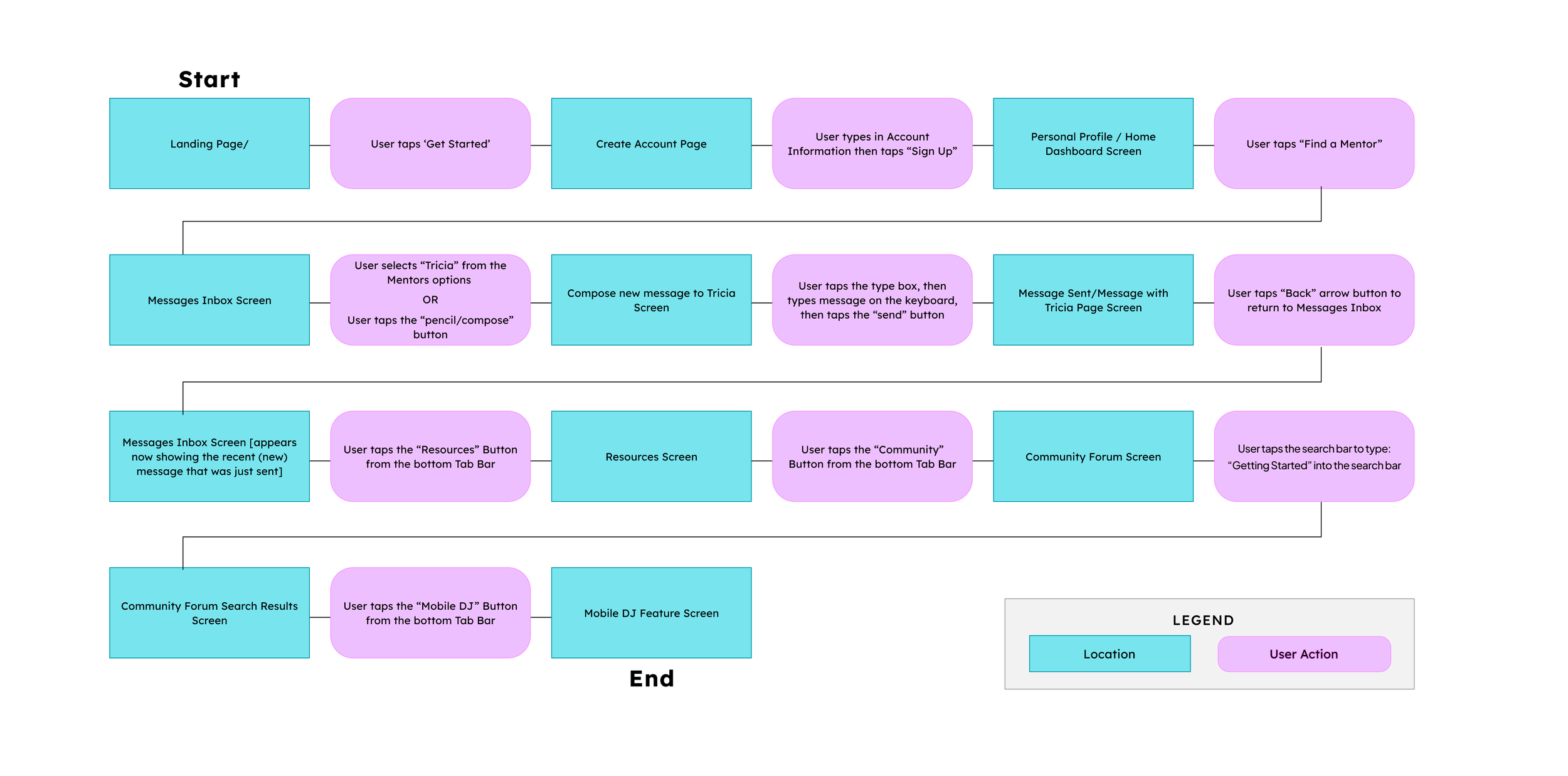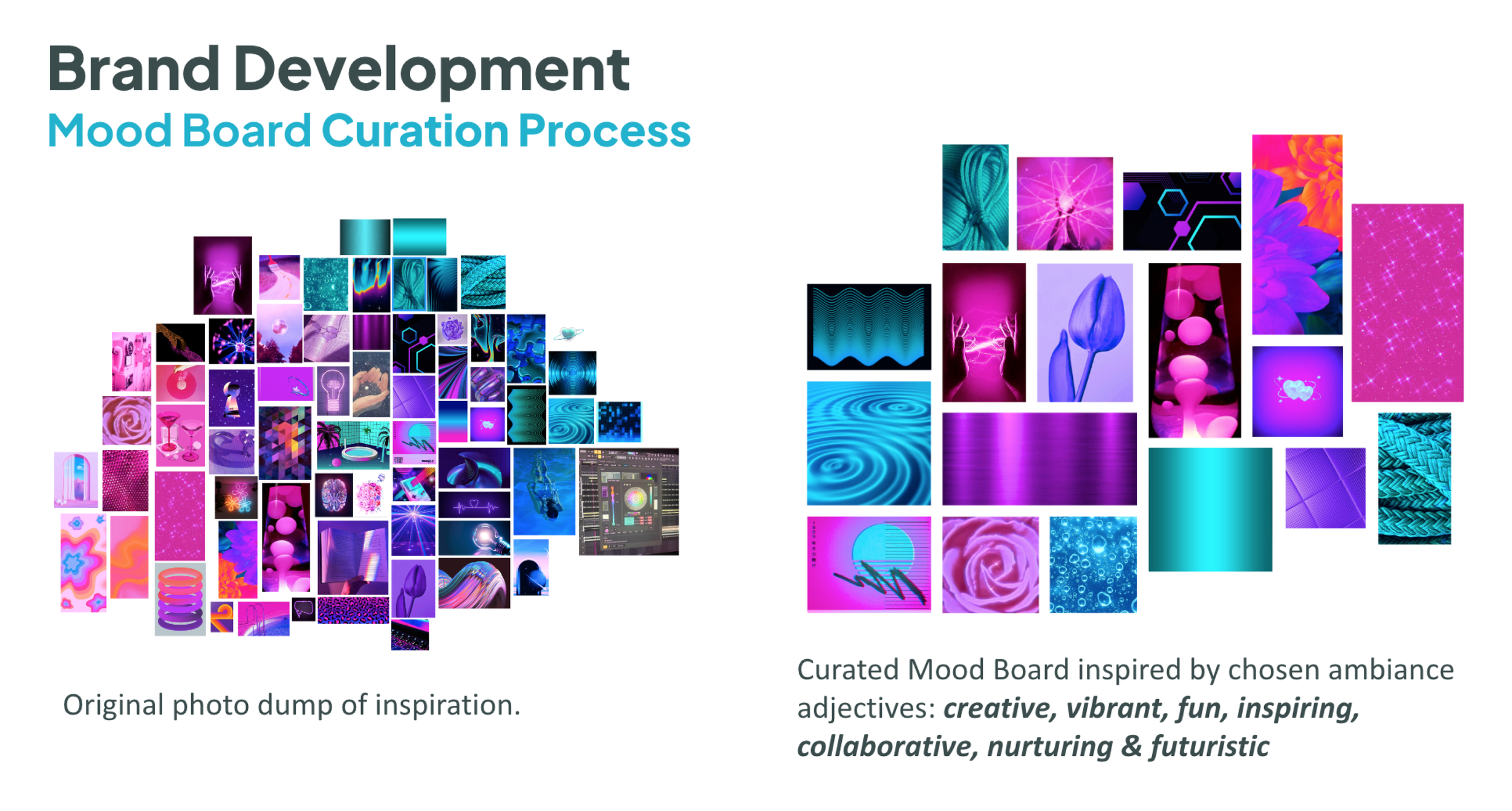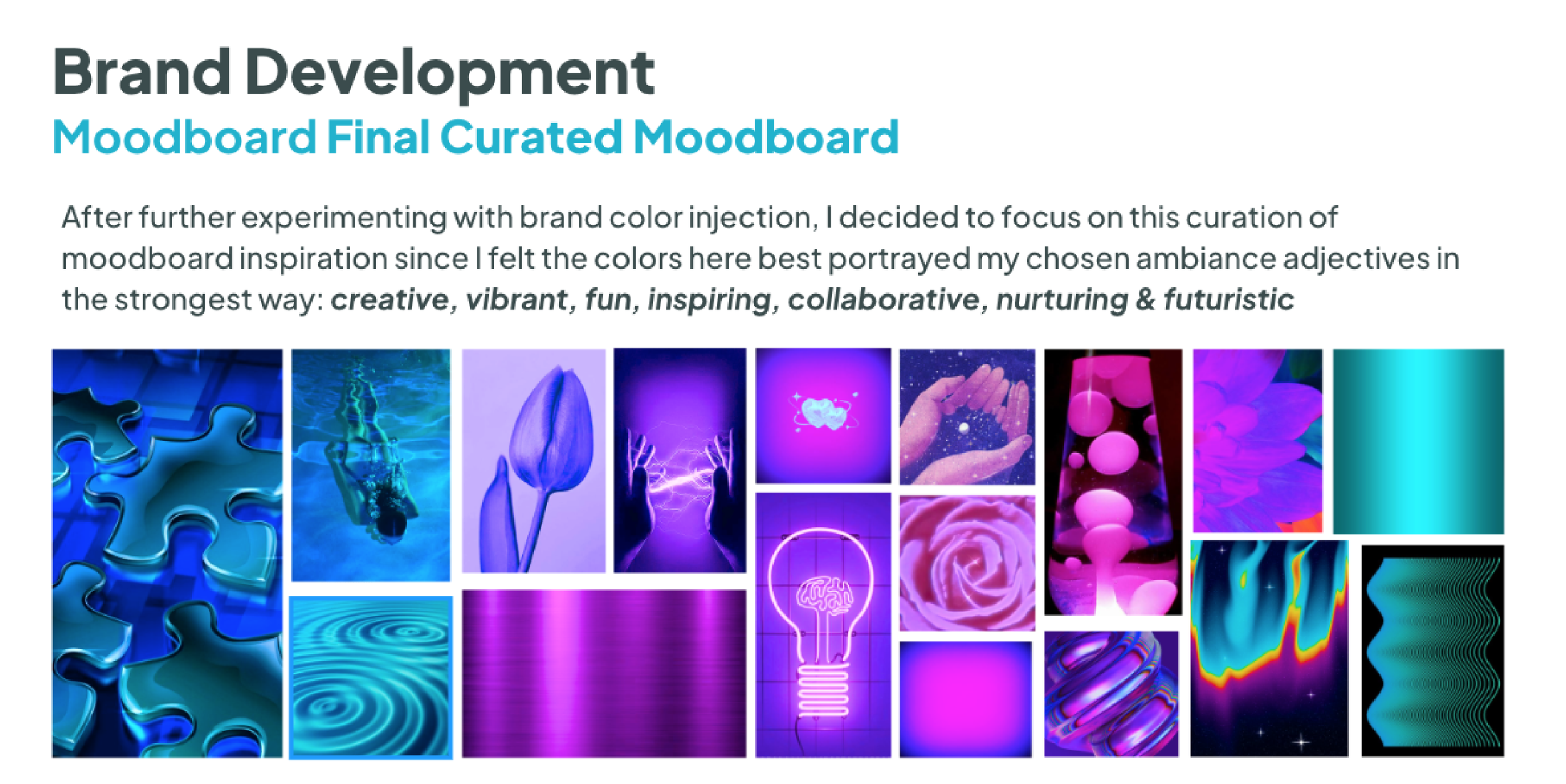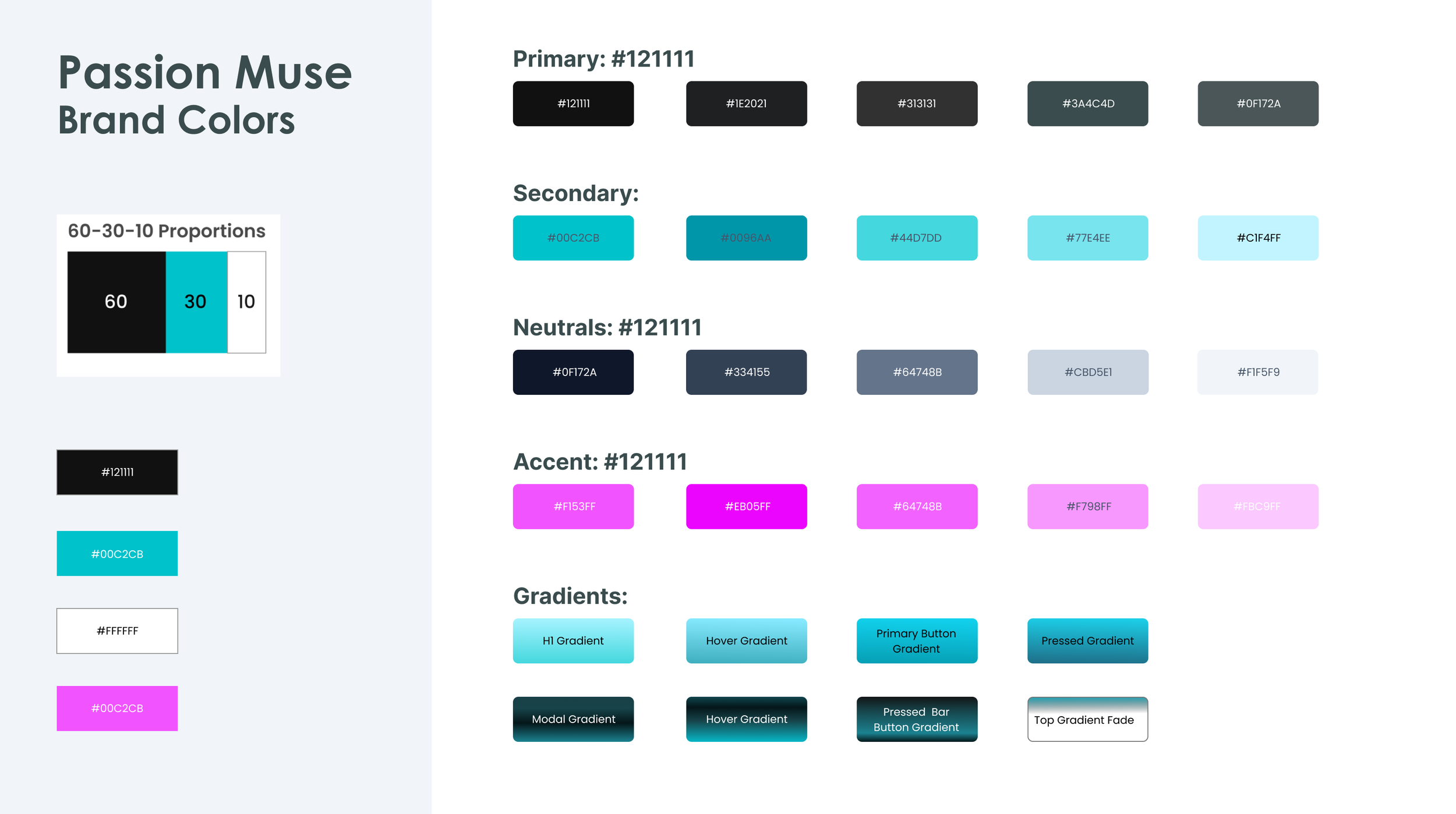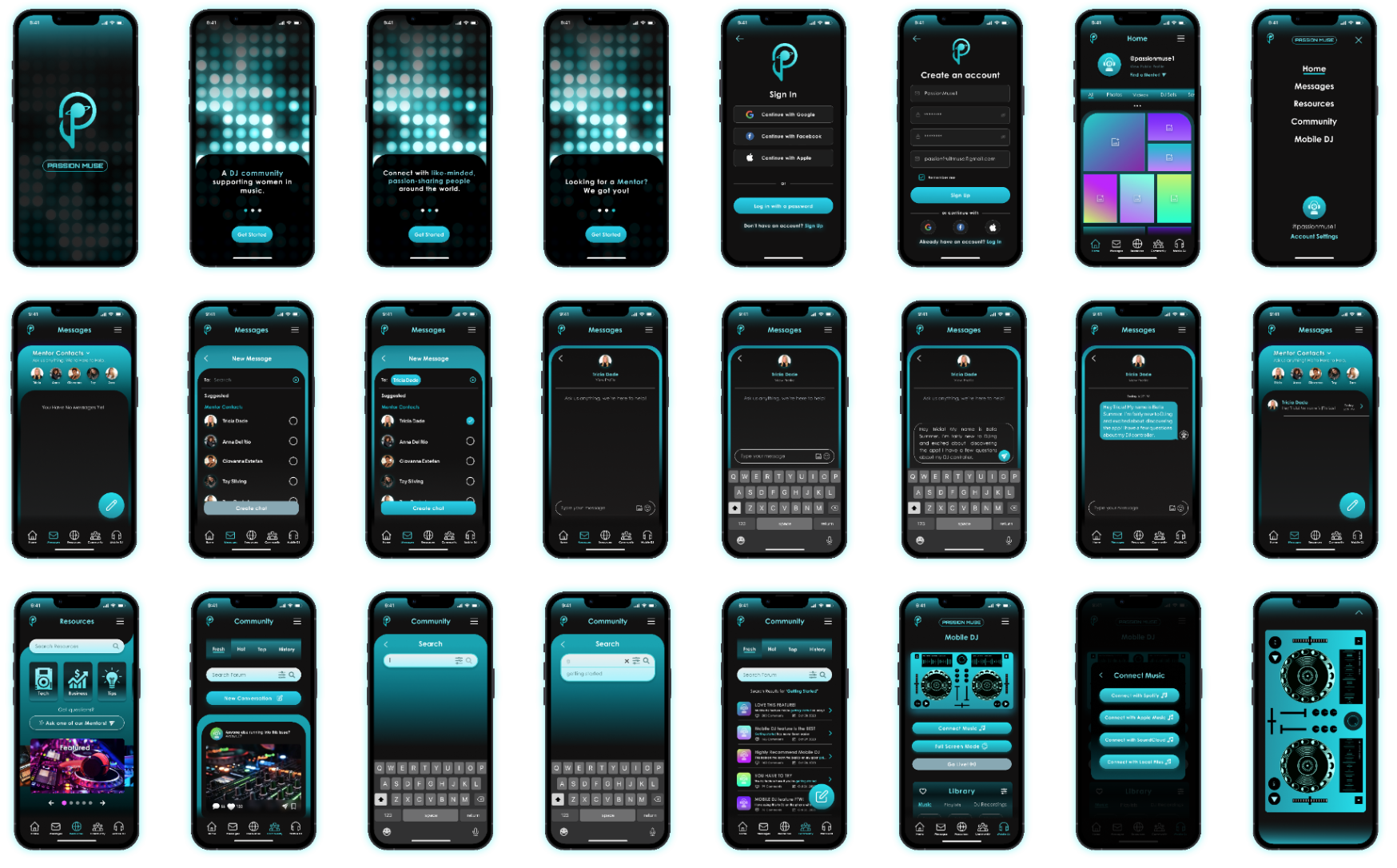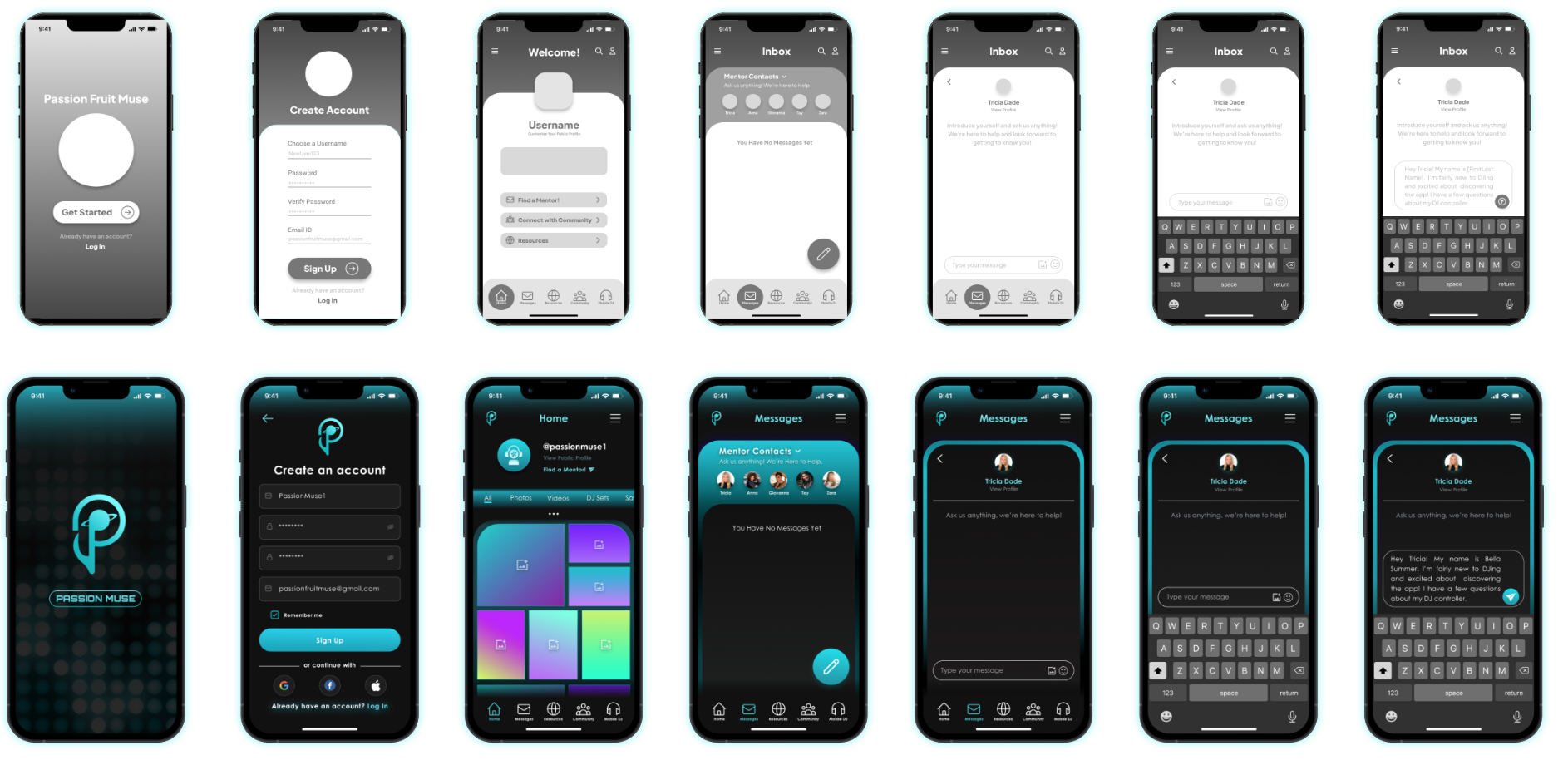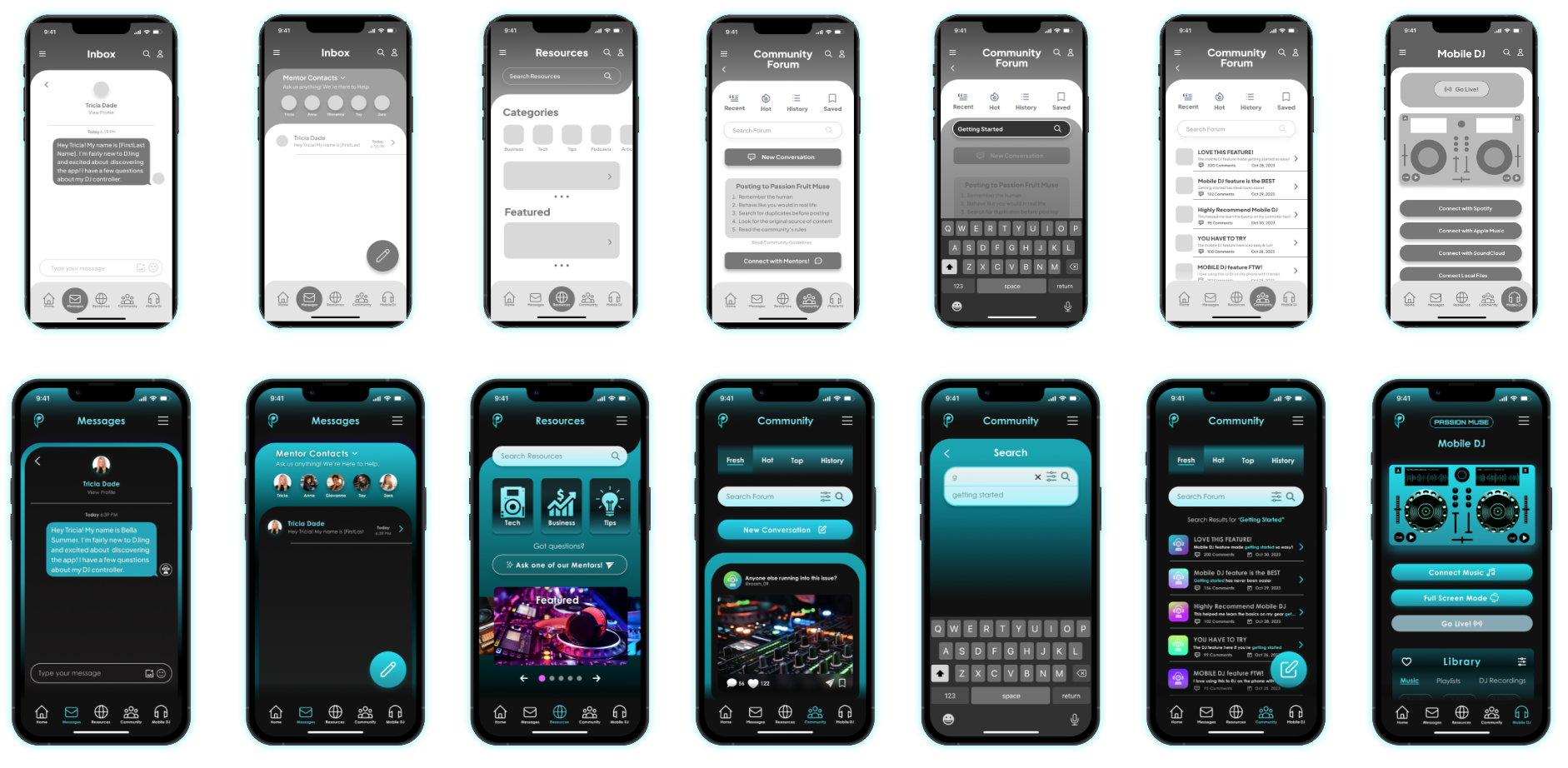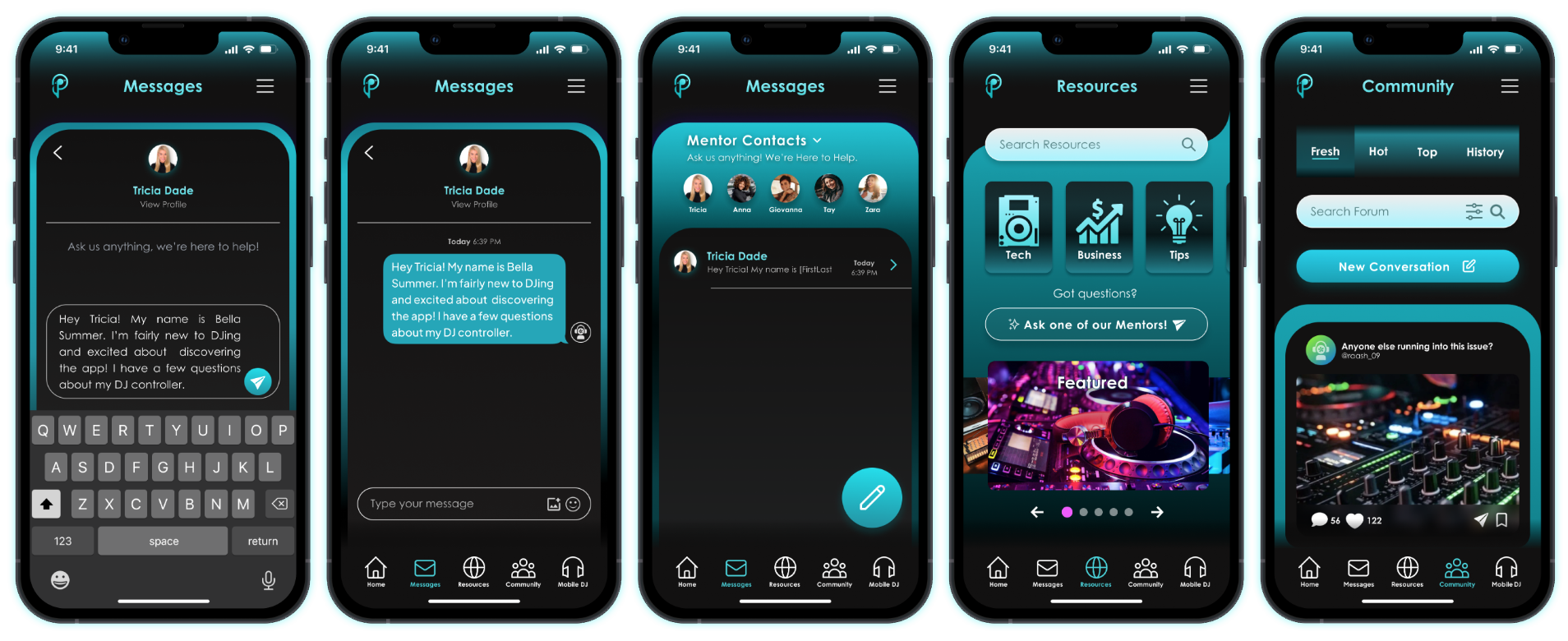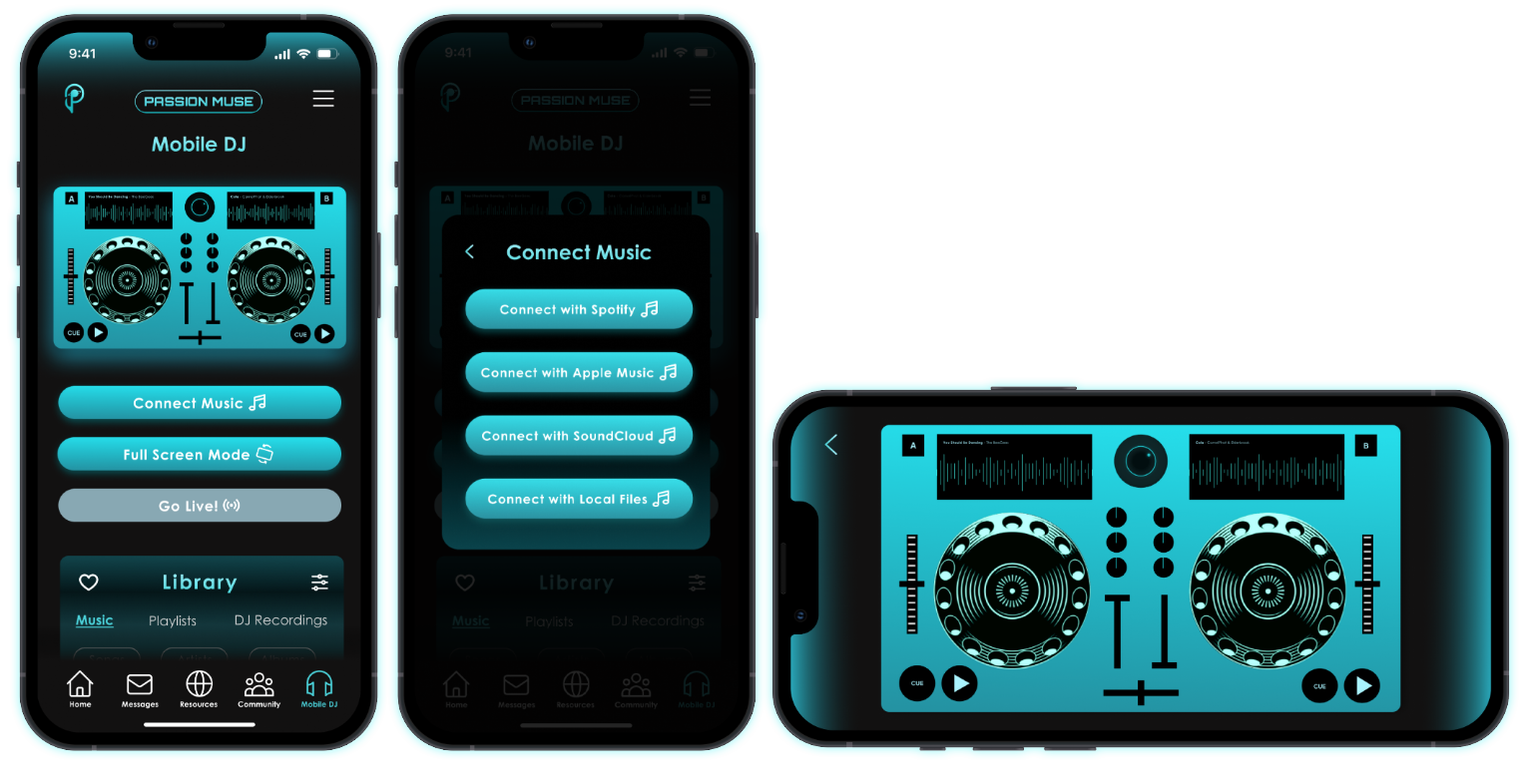Project Overview
Project Type: Academic - Solo
Duration: 12 Weeks (Sept - Dec 2023)
Role: UX Researcher, UX/UI Designer
Tools: Figma, Photoshop, Otter Ai
Platform: iPhone
This project was an end-to-end UX Design process where I was tasked with designing a digital mobile solution that addressed a problem space of my choice. I designed a DJ community app specializing in female mentorship to empower women in music and aid in closing the gender gap by offering top-tier digital mentorship, exclusive resources and support for success in the DJ Industry.
Chosen Problem Space
There is a significant gender gap between men and women in the DJ industry. With over 11,000 DJs employed in the US, only 23.5% of all disc jockeys are women.
The Design Process
I used the Interactive Design Foundation’s Design Thinking Process as a guide in my creation process.
It is a human-centered approach with the goal being to design a solution that addresses the users’ real human needs.
Empathize
Problem Space Statement
Women represent less than ⅓ of artists in music today, with 12.6% of songwriters and fewer than 3% of producers. Only 10% of performers at music festivals around the world are female. Three of the biggest drivers of gender inequality in music are male-dominated resources, gendered ageism and sexual harassment/objectification.
Key Research Insights
In a 2021 survey of women creatives – including artists, songwriters, producers & DJ’s:
of women felt they had been treated differently due to their gender
named sexual harassment and objectification as a major challenge.
One recurring pattern that appeared across my research about why there are less women in the music and DJ industry is that women are less likely to reach out for mentorship from someone of the opposite sex; and vice versa.
Suzanne Ciani stated in a 2017 interview when asked if her life as a musician was a total boys club, “women are comfortable with other women the same way men are comfortable with other men, there’s nothing wrong with that.”
Music is an incredibly important part of culture around the world and the lack of female representation is statistically shocking. The music and DJ industry could greatly benefit from having more women involved. We need both men and women to come together in an effort to close this major gender gap.
Design Challenge
How Might We facilitate the journey of female DJs so that they feel more encouraged to pursue careers in music?
Interviews & Affinity Mapping
I conducted 4 interviews with female DJ’s to dive deeper into personal insights from their experiences of navigating the male-dominated industry. I asked them how they overcame barriers to entry and what could have made their journeys easier to navigate.
After interviewing, I placed key data points from each interview on digital sticky notes and categorized them into pain points, motivations & behaviors. This process is called Affinity Mapping and is used to identify recurring themes and patterns.
Key Themes
The key themes from my interviews were lack of mentorship, confidence issues, and the participants’ driving passion and interest for music.
Chosen Theme: Lack of Mentorship
I chose lack of mentorship to focus on because all 4 women I interviewed commented on how difficult it was to navigate their DJ journey without niche mentorship. It became a large umbrella theme for a number of sub-themes.
Lack of mentorship also ties back into my secondary research that found females were less likely to reach out to someone of the opposite sex for mentorship and vice versa. There is much research pointing at this aspect of psychology. If there is less female representation in the market, there will be, in turn, less females exploring their initial interests.
Define
Persona/Experience Map
This is the persona representative of my target audience that I will be designing my digital solution for.
From here I created an experience map of her journey navigating the DJ industry from Phase 1 being the initial interest.
Chosen Opportunity
From phase 1 in the experience map of navigating the DJ industry, the opportunity presents itself to provide access to female mentors during this phase to encourage them to take the next steps in the journey. I decided to choose the opportunity for improvement of providing female mentorship to focus on. This opportunity served as my inspiration to create a digital community app that can connect female DJs to female mentors in addition to providing access to other valuable resources they need to navigate the DJ industry.
I feel this is the best opportunity to address the problem space because it occurs at the beginning of my target user’s experience journey into the Industry. Perhaps the reason there aren’t more women is because they are deterred from taking next steps in exploring the career path from the beginning.
If there isn’t available female mentors to reach out to in the beginning stage of initial interest, it is less likely that women will take further steps into the space.
Lack of availability of valid information from a female source in these beginning stages appears to be a contributing factor to the lack of females in the space.
Ideate
Task Selection
I used the goals of my persona and target audience to come up with user stories that identified tasks to accomplish the user’s goals. I organized the stories into functionally related groups based around common themes and combined similar stories into one chosen user task to focus on for my digital solution’s task flow.
Task Flow Diagram
Task flows show a series of steps that users take to complete a specific task. My chosen user task includes a number of tasks which will become feature screens in my digital solution. The task flow diagram below shows the initial flow a new user would take in navigating the app and all of it’s task features. This is the selected Task Flow I used to build out the initial version of my app’s prototype.
My Chosen User Task
As a female DJ, I want to join an online resource community and support system so that I can seek mentorship, access resources, develop skills, build confidence, network with a like-minded community, and pursue a career in music.
Prototype
UI Inspiration & Wireframing
I began the design creation process by first researching UI inspiration for the screens in my task flow. I refined my UI Inspiration Board into a Selects Board, then sketched a variety of potential screen layouts that would best accomplish my chosen user task.
Solution Sketches:
Sketches to Lo-Fi Wireframes
Grayscale Prototype
Testing
I conducted usability tests with 10 users in order to obtain practical, real-time feedback that can be incorporated to improve the design and ensure user functionality. I used a Design Prioritization Matrix to plot user feedback suggestions based on User Value vs. Design Effort to help me prioritize my revisions for the high fidelity prototype.
Refine
Brand Development Story
My DJ app's visual brand identity is a fusion of cyan blue, black, and white, adorned with magenta pink/purple accents. Cyan blue was selected to evoke trust, instilling confidence in users about the reliability of information from our app and mentors. This trust not only ensures user retention but also encourages recommendations. Fonts Century Gothic and Orbitron Black were chosen for their tech-forward, geometric elements, aligning perfectly with our brand's futuristic vibe—a space envisioned to propel DJs into a tech-savvy future. My word mark logo, nestled in a rounded-pill shape, draws inspiration from iconic designs, like the Nintendo logo, aiming for instant recognition and lasting impact.
The app's icon drew inspiration from a mockup logo found in Figma's community, 'Musium.' Admiring the simplicity of Musium's design, I used it as a starting point, creating multiple logo variations that didn't satisfy me. Eventually, an insight struck—flipping Musium's logo upside down revealed a distinct "P," perfectly aligning with my music brand, "Passion Muse." Adding my planet record emblem at the center, I crafted my unique version using the pen tool in Photoshop. Alongside my mood board and color selection process, I showcase the evolution—from app icon creation to the final wordmark and logo, each presented in various color iterations.
Chosen Word Mark & Icon:
Reasoning Behind "Passion Muse" Brand Name:
"Passion Muse" is an intentional pairing of the words, 'Passion' and 'Muse,' symbolizing a wellspring of creative inspiration. Originating from the concept name "Passion Fruit Muse," the name embodies thoughtful contemplation as a verb—and as a noun denotes a person, especially women, who serve as sources of artistic inspiration. Drawing from mythological significance, the Muses were nine goddesses symbolizing arts and sciences. In the modern context, a muse serves as an artist's inspiration. This unique choice of name reflects my aspiration to inspire and empower women passionate about pursuing musical artistry.
High Fidelity Mockups
After brand development and applying revisions from user testing feedback, here is how my app translated into it’s High Fidelity Prototype:
Product Marketing Site
Why do Product Marketing Sites matter?
Multi-Platform Challenge
My app would perform best on on it’s stand-alone app format. It would also function great from a desktop web browser or tablet
Design Impact/Future Thinking
What happens when 100 million people use your product? What would mass scale usage of your product reveal or cause?
If 100 million people were to use my product, it would signify substantial positive outcomes—most notably, a potential closure of the gender gap within the music industry. With a massive user base, we'd successfully gather influential mentors, educators, and advocates committed to cultivating an inclusive space for women in music. The extensive scale of usage would spotlight any potential mentorship quality issues, compelling us to elevate our practices. Furthermore, we anticipate a notable surge in female DJs globally. Ultimately, reaching this vast audience could position our product as the foremost women-in-music support network worldwide.
Key Project Learning
Through my project planning and creation process I learned many things ranging from User Experience Design, to actual recurring feelings that female DJ’s have about the problem space and DJ industry in general, to project planning and implementation. Research was a major key behind validating the why behind a project’s existence.
If a real, healthy, support system could be created to encourage and guide women in this male-dominated industry, I feel the positive impacts have potential to be ten-fold.
After designing for the needs and goals of a user — further and continuous User Testing of the product is also key because it reveals continuous use-improvements from their perspective. Designing for the user should be put first in all design decisions.



